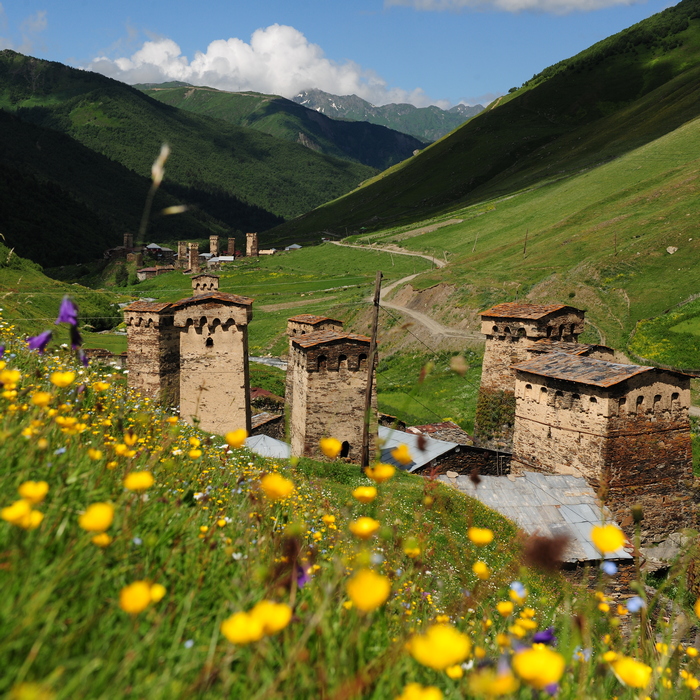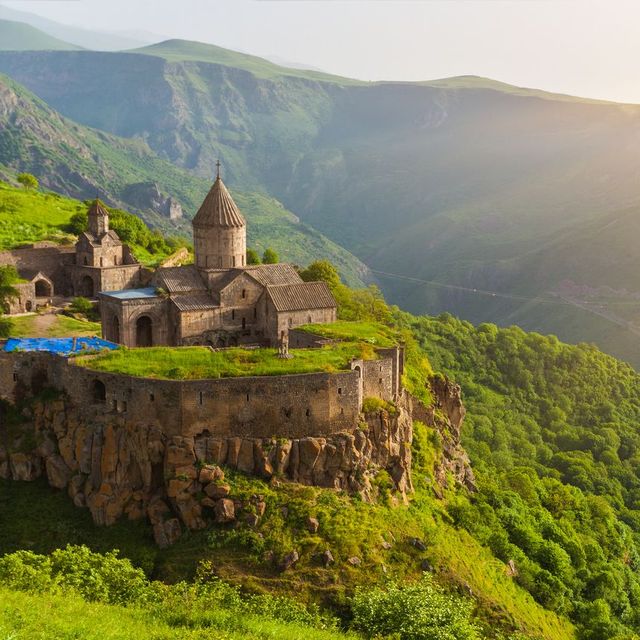As of late, Georgia has been enjoying consistent growth in terms of year-on-year percentage increase of visitors. With it, 2019 brought the country’s record high, indicating how important the industry is becoming to the country’s economy. This being said, it may surprise you to hear it still lies far behind countries such as Saudi Arabia and Kazakhstan. Whilst Georgia itself is a country that anyone should strive to visit, it also possesses untold treasures between its borders, one being the region of Svaneti.
Once upon a time the highway to the region’s capital, Mestia, was rife with highwaymen and bandit gangs. This is the singular route in to the heart of Svaneti, and all traffic must traverse it. During my time here in 2018, I was in the back of a car owned by a chap called Misha, a native to the area. He had a faraway look in his eyes when recounting these troubles that ended almost two decades ago, and gripped the steering wheel a little tighter. Apparently the problems were so severe that in 2004, under the harshly progressive president Saakashvili, security forces were sent in to 'deal with the problem', and I for one am glad they did.
In this part of the world, time becomes trivial. You quickly learn to live without timetables, and how to adhere to 'Svan time'. This concept renders our own–less whimsical–version more or less obsolete in this mountainous and remote region of an already mountainous and remote country. However, even to the native Svans themselves twenty years is a long time.
Photo: Bertie Adam, 2018. On the road to Mestia.
In recent years Svaneti has undergone something of a renaissance: with the fears of roadside robbery now long in the past, the biggest concern is either being properly prepared for the many possible treks, or being unable to decline any offers of hospitality or food. I actually ended up drinking a whole afternoon away with an unruly gang of village geriatrics simply because I didn’t want to decline for fear of appearing rude. That being said, it ended up being one of the most memorable moments of my time here.
Saakashvili’s gung-ho attitude and legacy has meant that the beautiful alpine landscape is now open for all to explore, and I can’t think of many places I would recommend more. And despite Georgia’s tourism being on a steady rise, Svaneti is still remote enough to be able to lose yourself with absolute ease, and it’s a region that’s culturally distinct even within the confines of Georgia proper.
Photo: Bertie Adam, 2018. Ushguli.
The Caucasus region is pockmarked with fiercely disputed territories and intriguing little exclaves, and Georgia has several: Abkhazia, which lies to the west of Svaneti, and South Ossetia, to the east. Although Svaneti was absorbed into Soviet rule following a 1921 uprising, and eventually into independent Georgia following the 1991 dissolution of the USSR, it has always had a spirit that’s staunchly seperatist. The terrifying Mongol armies had failed to capture it on their way through the region, and for centuries after, the Upper and Lower parts to the region were split between several native kings and queens.
Svaneti isn’t just Georgia under a microscope; it is thought that the Svan language split apart from Georgian in the second millenium BC, thus rendering it completely unintelligible to monolingual Georgian speakers. Because of the relative isolation of the area, it’s given rise to many unique cultural aspects that can’t be found elsewhere. One example being polyphonic singing, with native Svans thought by some to be amongst the oldest practicers of this phenomenon on the planet.
There are very few examples of pristine mountain scenery with people who still hold onto their ancient practices and heritage, even fewer that haven’t yet been ravaged by mass tourism. Heat driven upcountry from the Black Sea means the summers are long and sultry, whilst the winters are capable of bringing deep snow. This means that those who are more adventurous can’t really find anywhere better than here for a decent romp in the mountains.
Alongside this, I’ve found there to be no better fuel than Svanetian cuisine to conquer its many peaks and traverse the verdant flower filled meadows with ease. Bread, cheese, potato and meat make up the Holy Quartet here. Freshly baked meat pies called kobdari and steaming khatchapuri oozing with molten cheese can be found everywhere, whether it’s a hole in the wall ran by a jolly matriarch or even one of Mestia’s more upmarket establishments.
The history of the region is widely celebrated, and one doesn’t have to look too hard to note the crumbling brick towers that form an integral part of the region’s native villagescape. Traditionally built to be five times as high as the width at their base, the region has hundreds of these towers still in good condition now, with many local families still using them as dwellings. Originally they were built for protection against invading outside forces, or simply against avalanches and landslides, a common occurrence in the region. Due to the scattered nature of the villages it was considered more effective to fortify each individual home. Some of these marvellous structures are over a thousand years old, and there is a lot of mystery as to why they’re still standing. One local theory amongst many is the addition of boiled egg whites to the kir, a medieval sand and cement mix used in their construction.
Photo: Bertie Adam 2018. Ushguli.
Svaneti is a region of complex beauty, surely soon to be discovered by many. UNESCO sites are more or less the norm here, and with a landscape that could be straight out of a film set it’s almost a wonder that the insidiousness of mass-tourism hasn’t yet sunk its claws into the area. Perhaps it's that most visitors to Svaneti are more inclined to camp and spend their time outdoors, thus meaning the towns and villages aren’t yet completely inundated by our accents and sensibilities. Or, perhaps it's simply because the amount of visitors aren't yet high enough for that to be the case.
One thing you'll certainly discover after making the journey here is that Svans and Georgians are both known for their hospitality, which is viewed as an absolute in these parts. So with a little respect, curiosity, and equanimity, you’ll almost certainly experience the exceptional in this tiny fissure on the world map.
Check out our tours with these unique experiences below
Prefer to do a tailor-made itinerary where you can choose your unique experiences and build your perfect trip?
Click here to contact us today.

